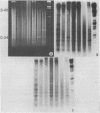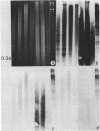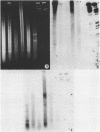Abstract
We have investigated the genomes of a series of primates to identify the presence of sequences related to human satellite DNAs I, II and III by restriction enzyme digestion and hybridisation with probes of these satellite DNAs. Where we have found such related sequences we have examined the extent to which they have diverged by measuring the stability of the hybrids. DNA satellite III is the oldest sequence being common to species which have diverged some 24 million years ago. In contrast DNA satellites I and II are of much more recent origin. Our results permit us to draw conclusions about the way these sequences have evolved, and how the evolution of repeated DNA sequences may be related to the evolution of the primate lineage.
Full text
PDF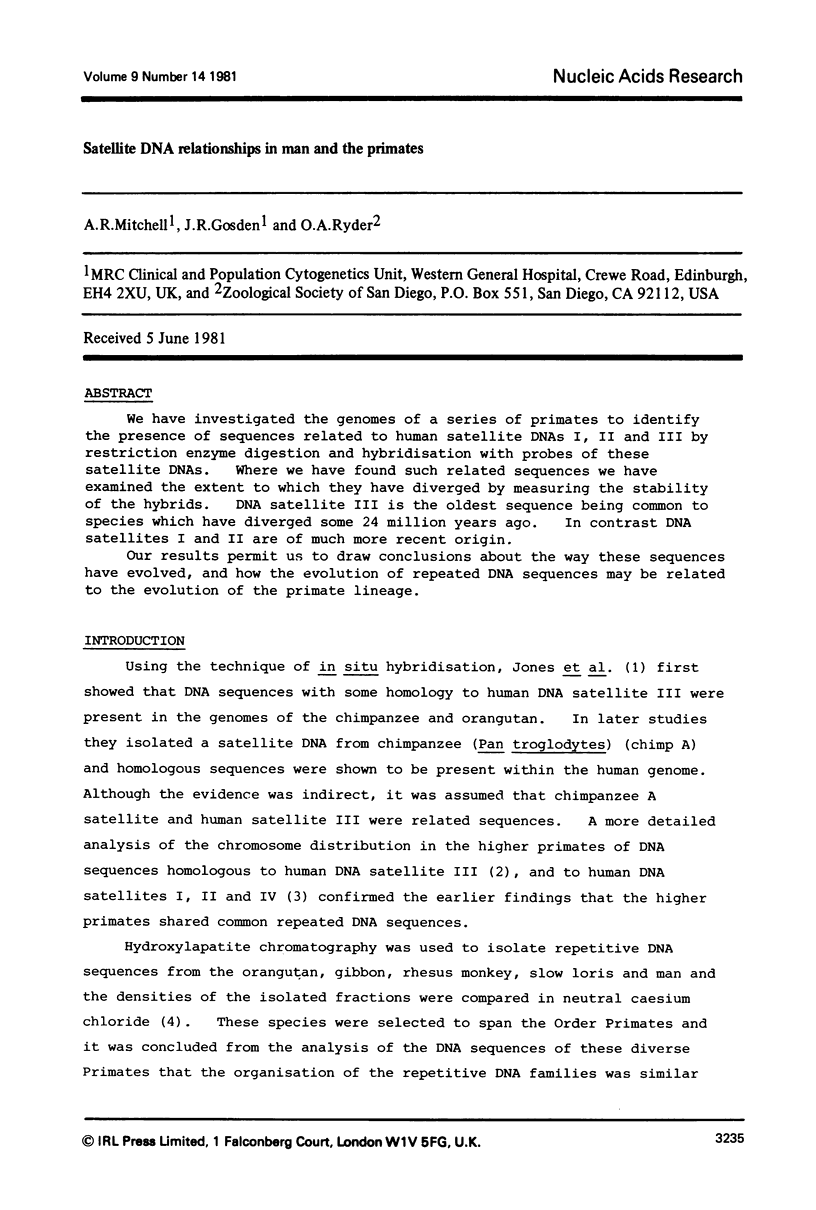
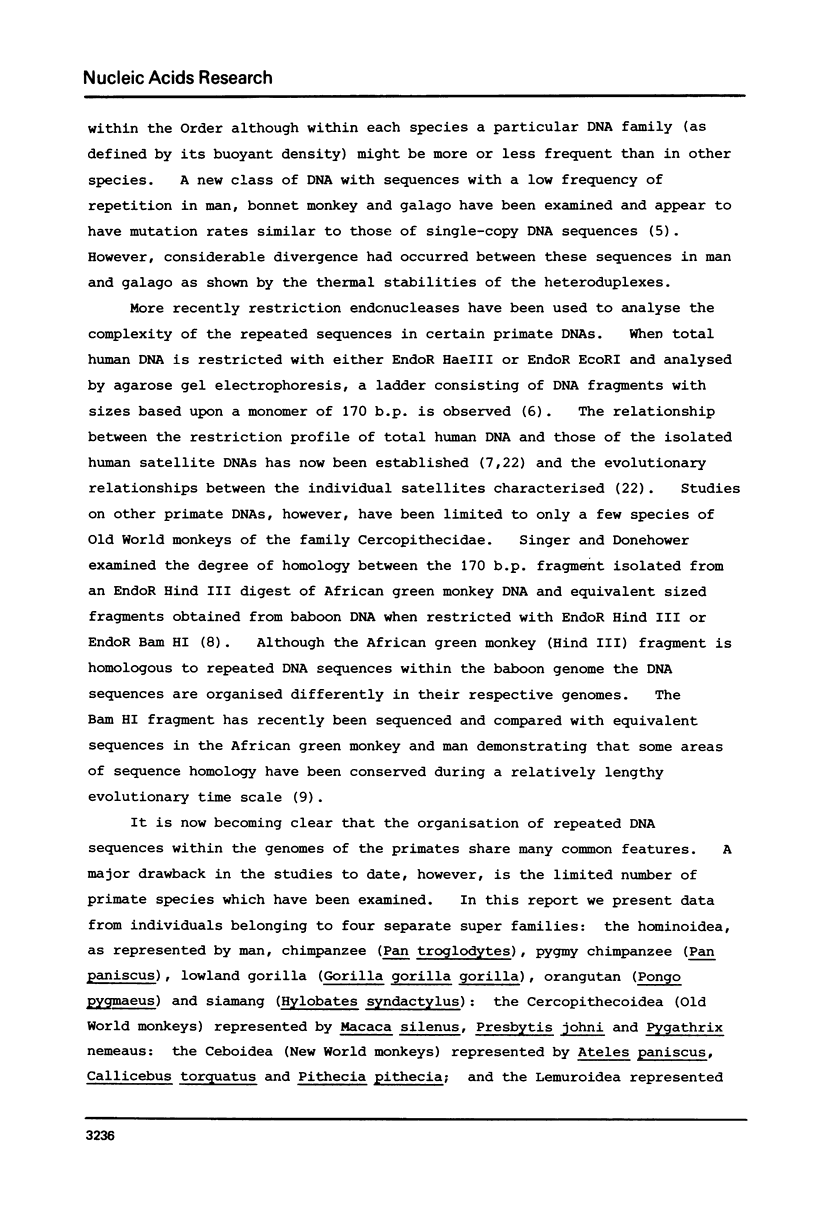
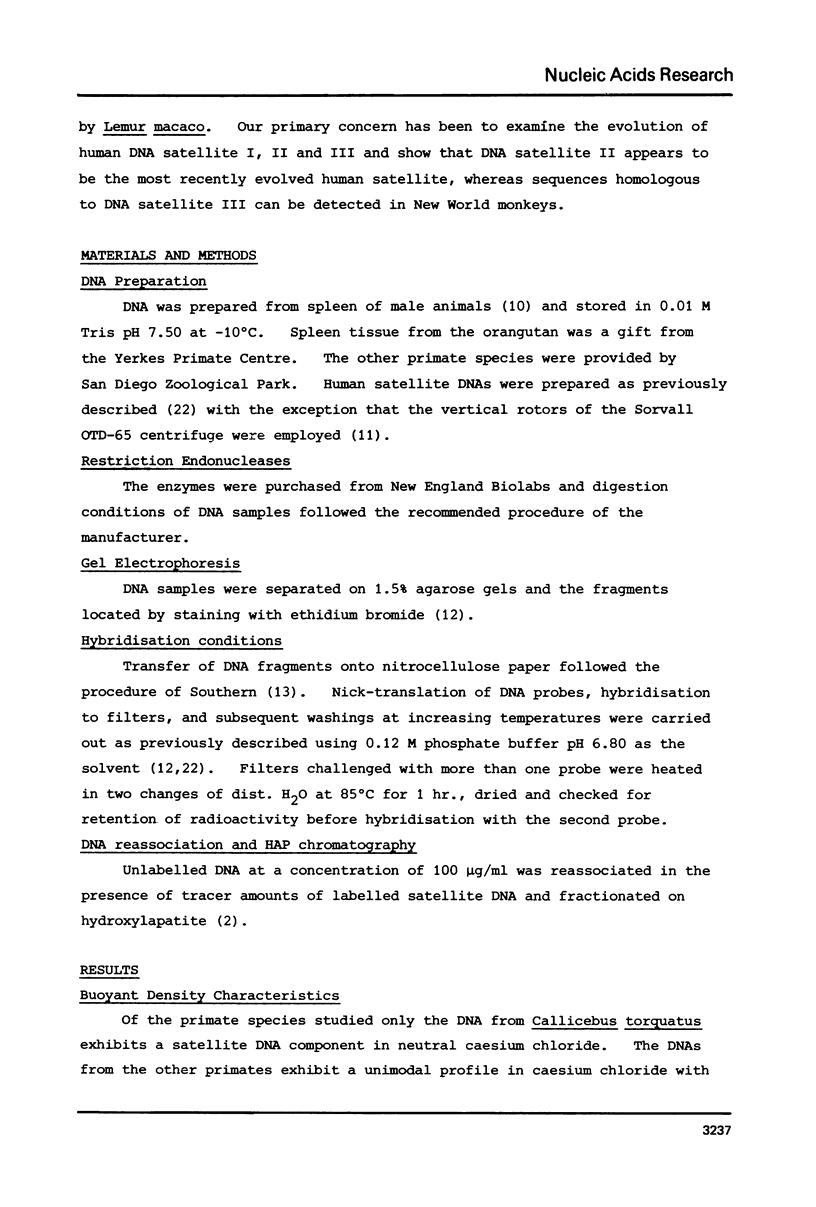
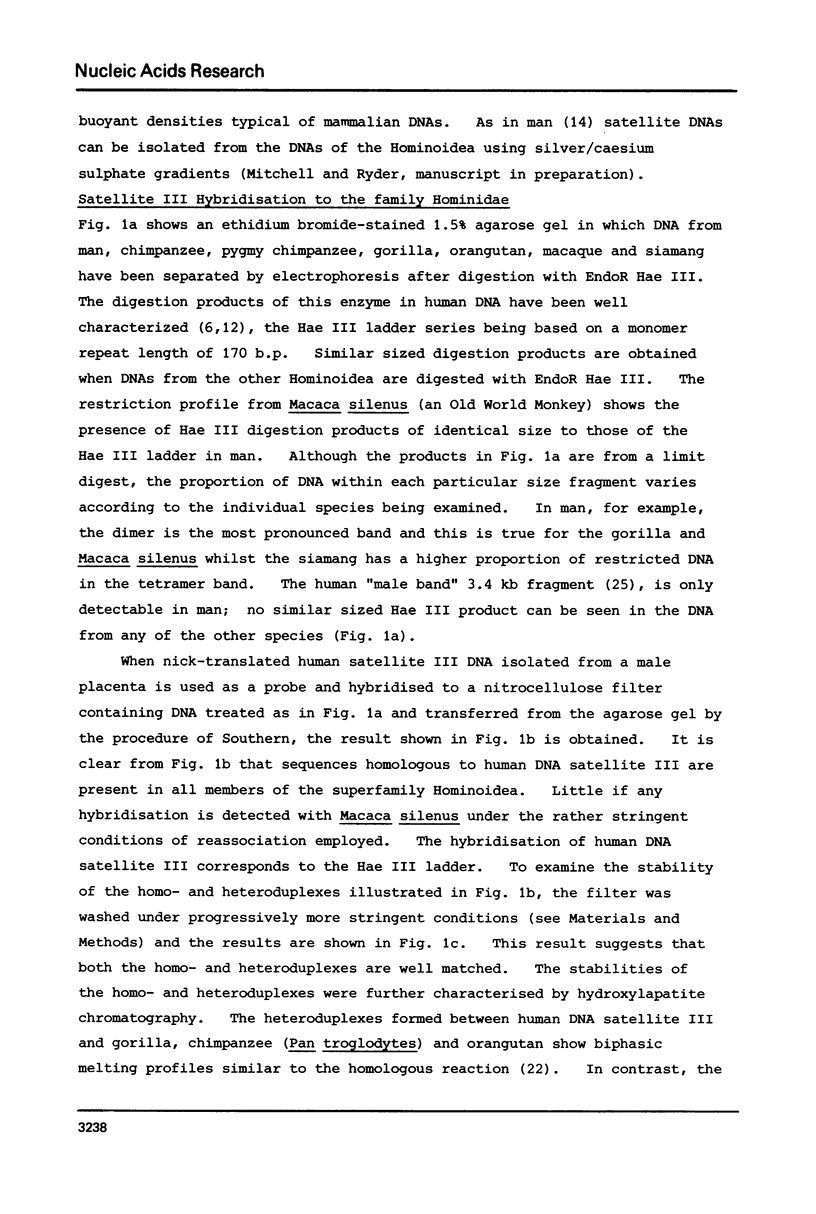
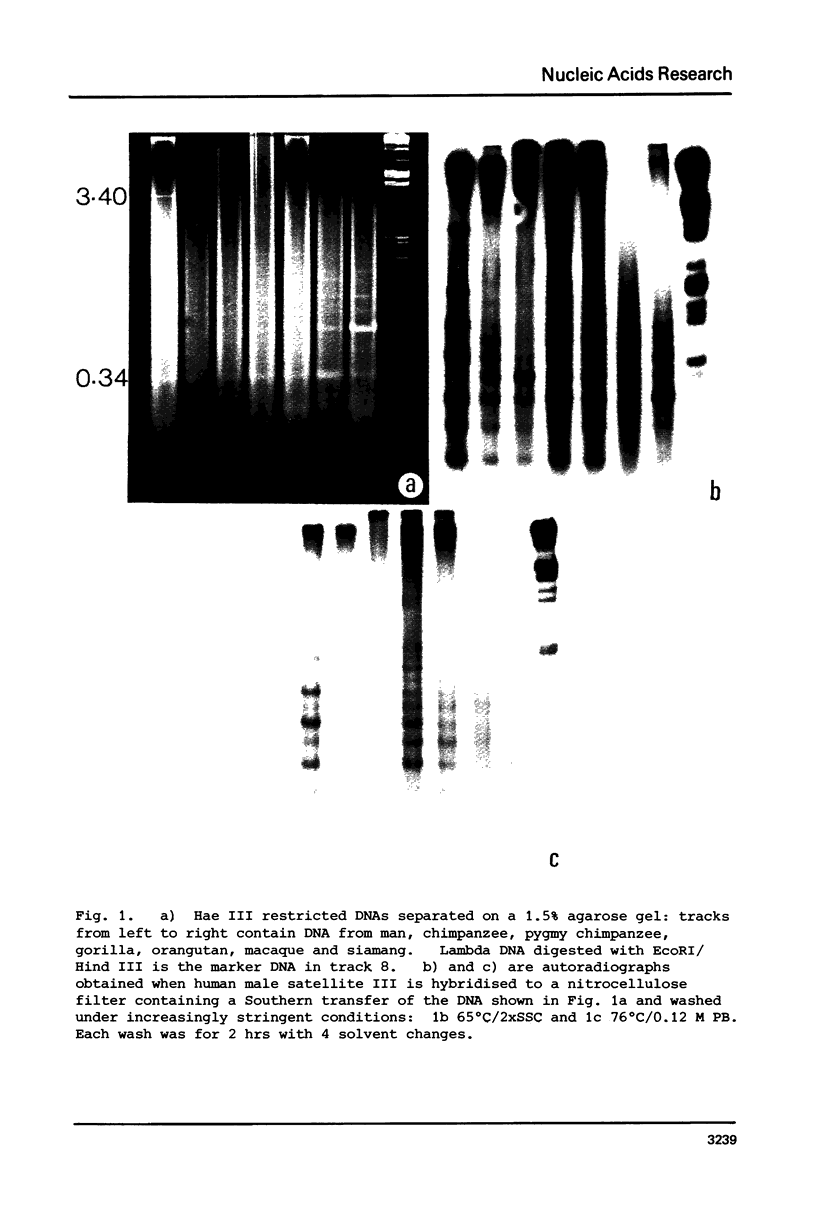


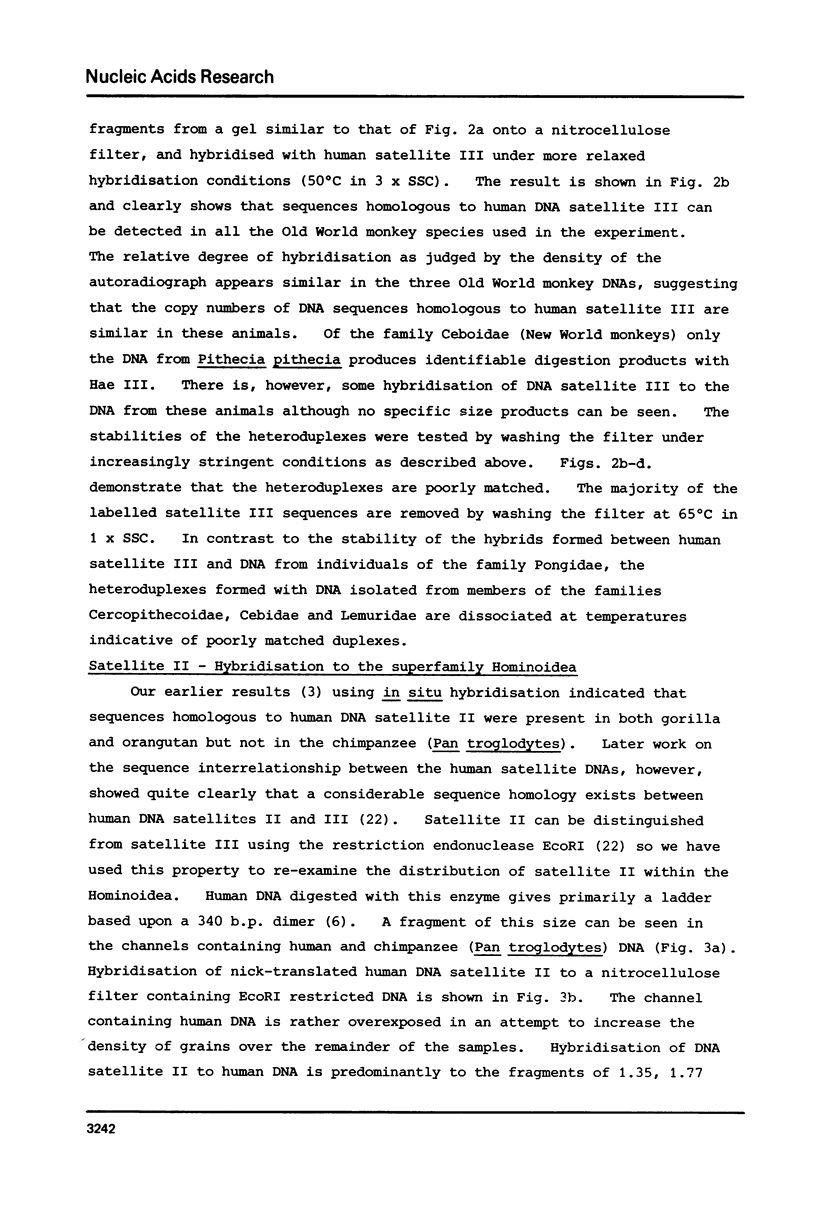
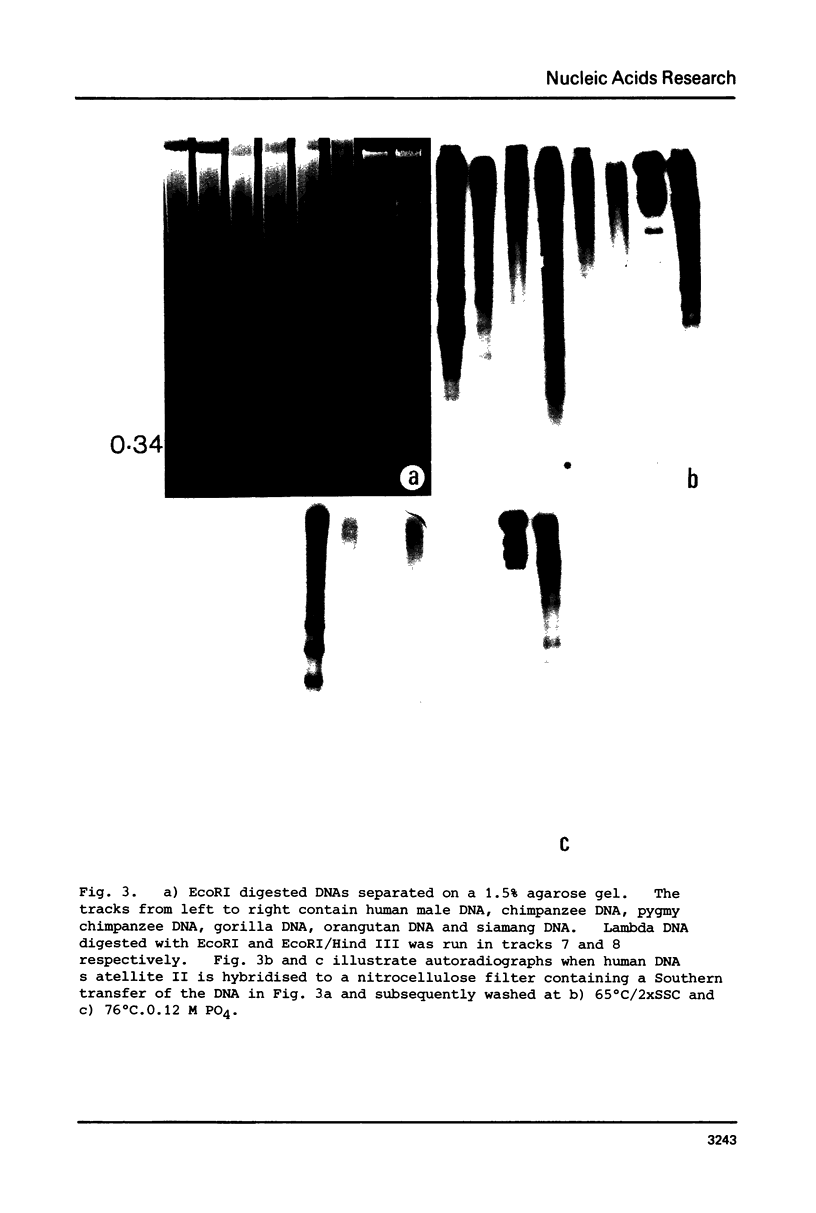
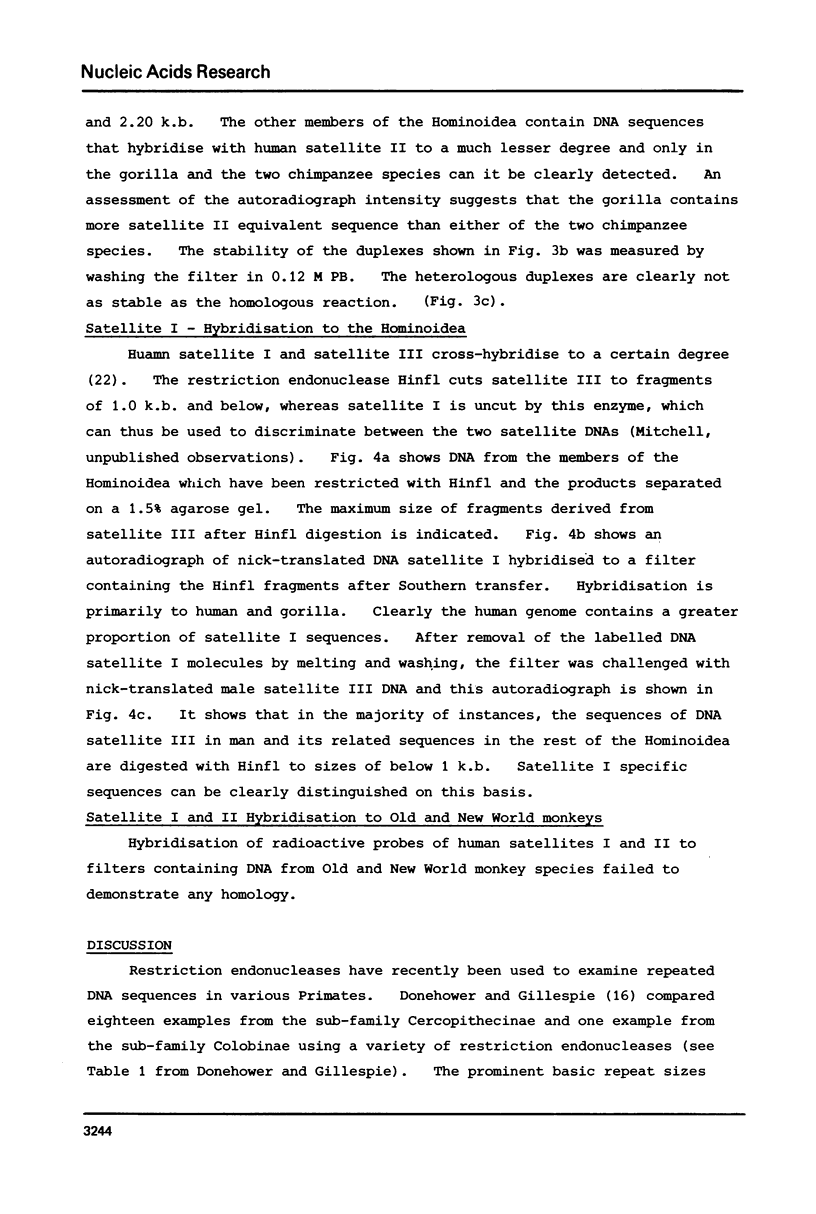
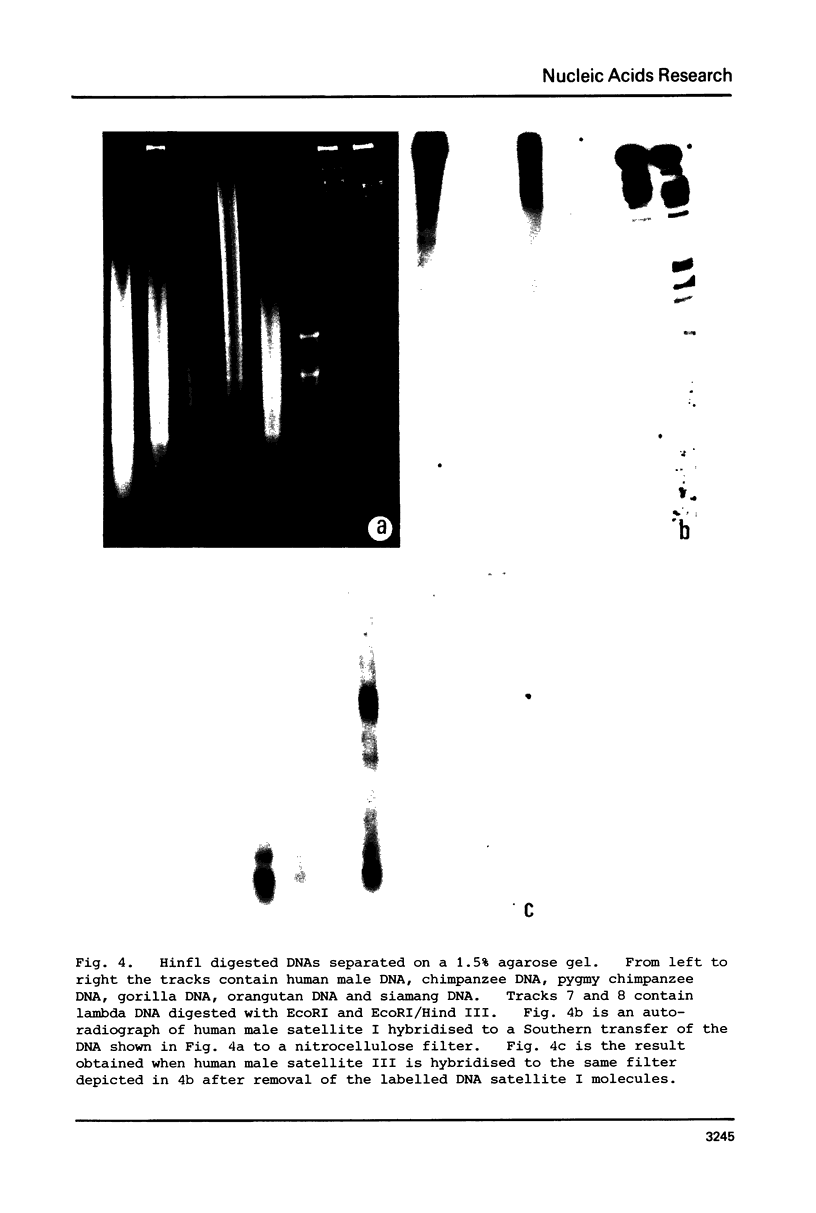
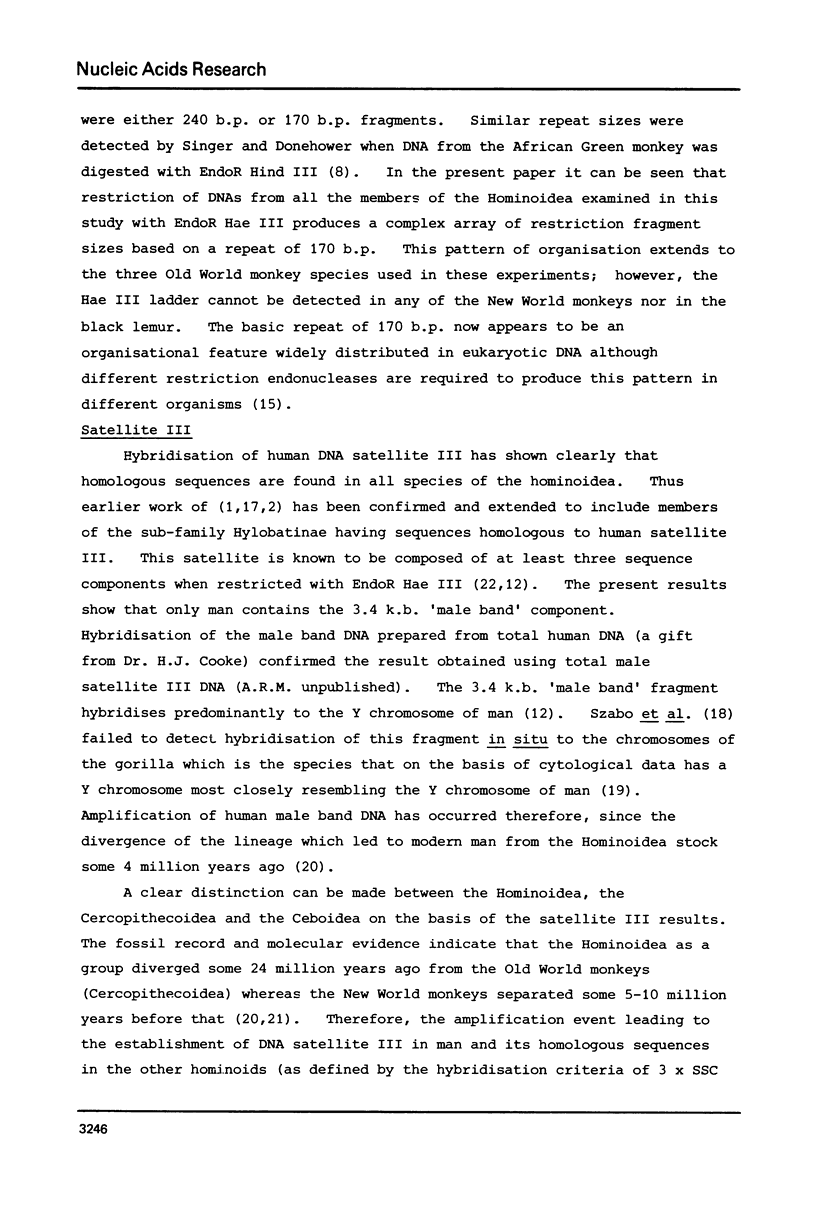
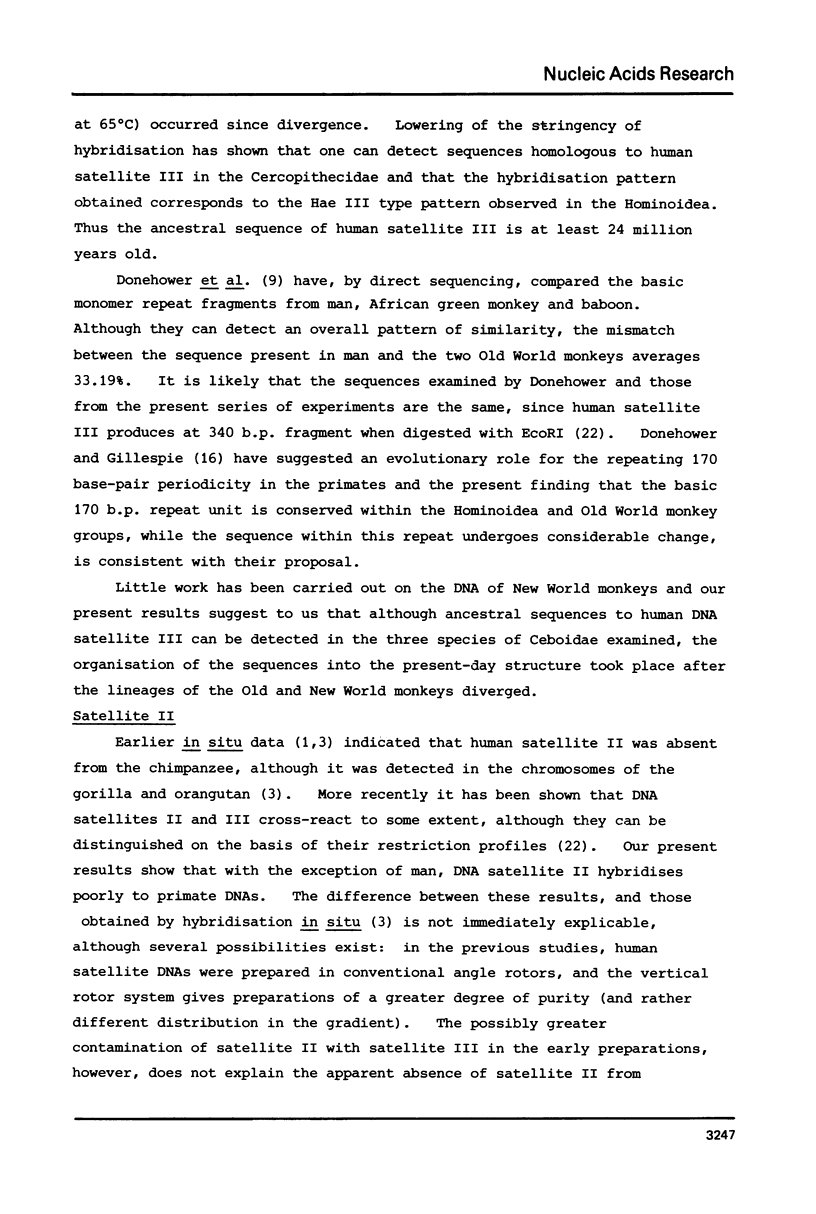
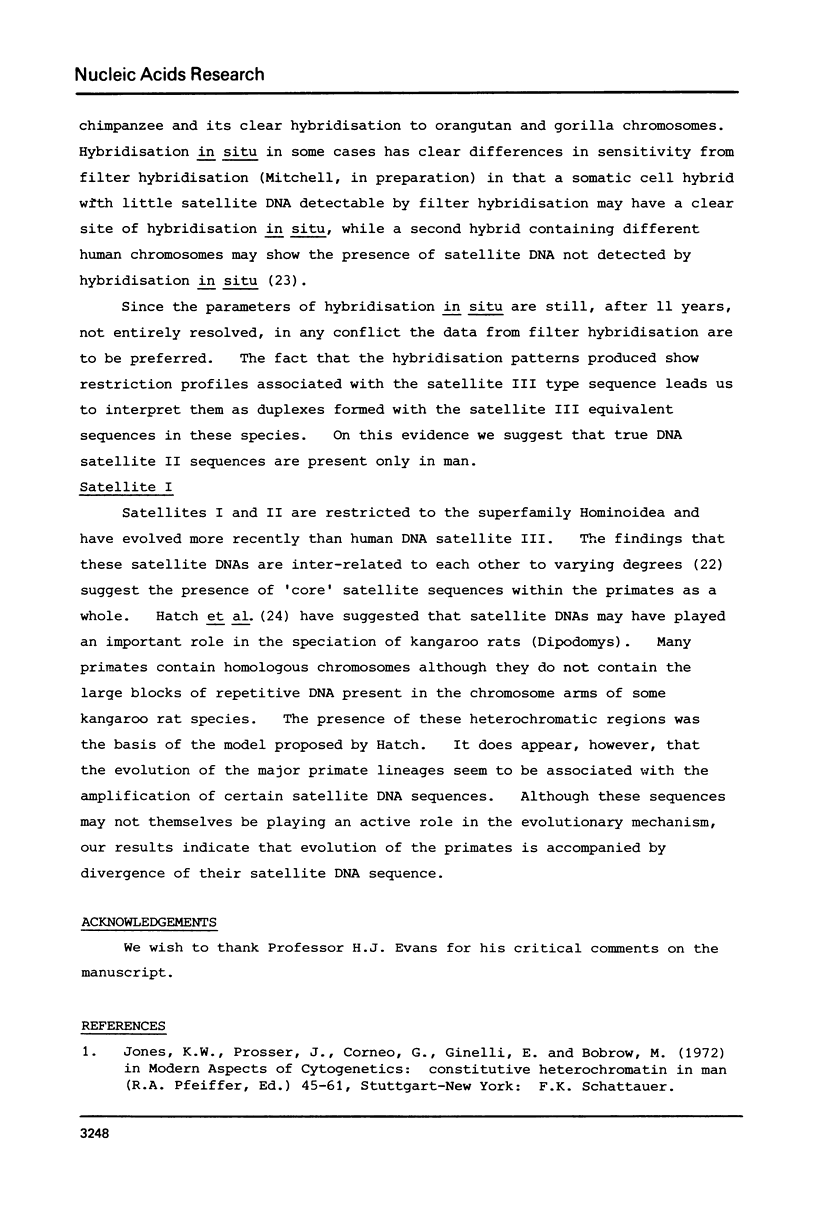
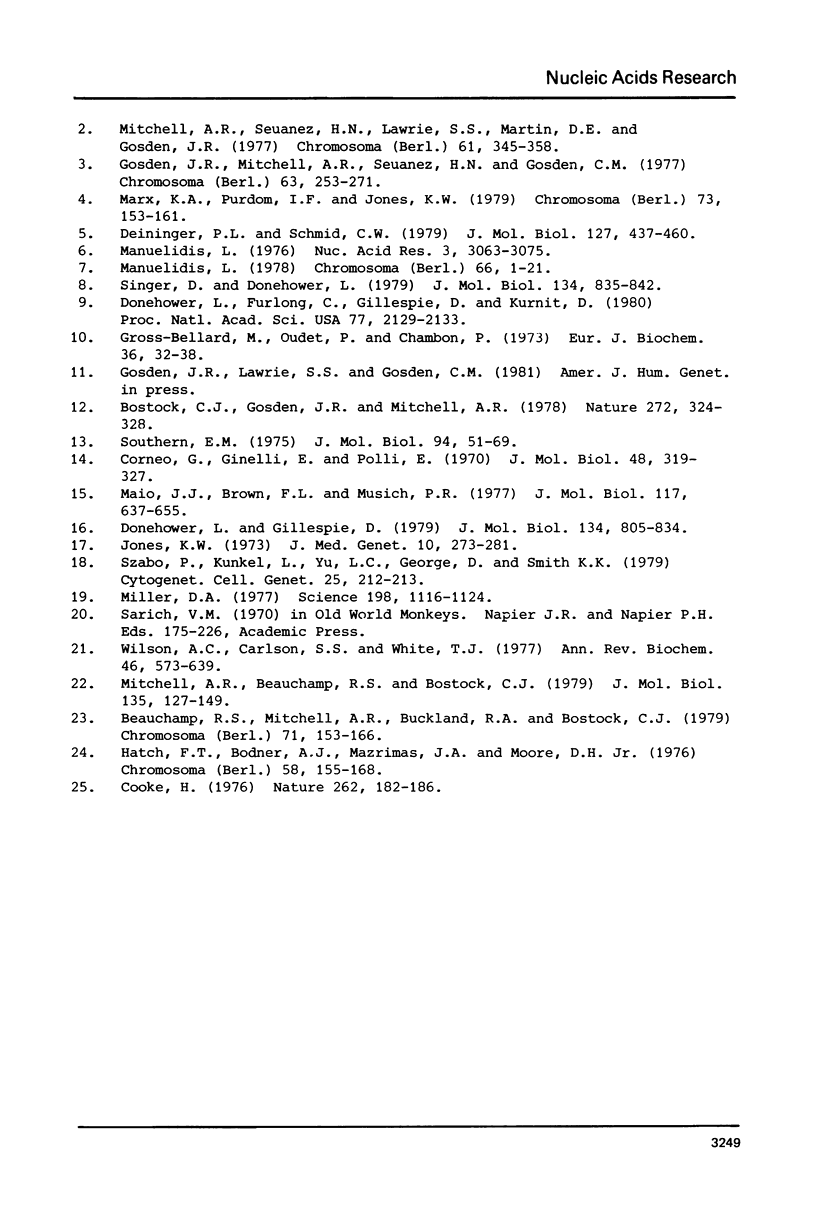
Images in this article
Selected References
These references are in PubMed. This may not be the complete list of references from this article.
- Beauchamp R. S., Mitchell A. R., Buckland R. A., Bostock C. J. Specific arrangements of human satellite III DNA sequences in human chromosomes. Chromosoma. 1979 Feb 21;71(2):153–166. doi: 10.1007/BF00292820. [DOI] [PubMed] [Google Scholar]
- Bostock C. J., Gosden J. R., Mitchell A. R. Localisation of a male-specific DNA fragment to a sub-region of the human Y chromosome. Nature. 1978 Mar 23;272(5651):324–328. doi: 10.1038/272324a0. [DOI] [PubMed] [Google Scholar]
- Cooke H. Repeated sequence specific to human males. Nature. 1976 Jul 15;262(5565):182–186. doi: 10.1038/262182a0. [DOI] [PubMed] [Google Scholar]
- Corneo G., Ginelli E., Polli E. Repeated sequences in human DNA. J Mol Biol. 1970 Mar 14;48(2):319–327. doi: 10.1016/0022-2836(70)90163-4. [DOI] [PubMed] [Google Scholar]
- Deininger P. L., Schmid C. W. A study of the evolution of repeated DNA sequences in primates and the existence of a new class of repetitive sequences in primates. J Mol Biol. 1979 Feb 5;127(4):437–460. doi: 10.1016/0022-2836(79)90231-6. [DOI] [PubMed] [Google Scholar]
- Donehower L., Furlong C., Gillespie D., Kurnit D. DNA sequence of baboon highly repeated DNA: evidence for evolution by nonrandom unequal crossovers. Proc Natl Acad Sci U S A. 1980 Apr;77(4):2129–2133. doi: 10.1073/pnas.77.4.2129. [DOI] [PMC free article] [PubMed] [Google Scholar]
- Donehower L., Gillespie D. Restriction site periodicities in highly repetitive DNA of primates. J Mol Biol. 1979 Nov 15;134(4):805–834. doi: 10.1016/0022-2836(79)90487-x. [DOI] [PubMed] [Google Scholar]
- Gosden J. R., Mitchell A. R., Seuanez H. N., Gosden C. M. The distribution of sequences complementary to human satellite DNAs I, II and IV in the chromosomes of chimpanzee (Pan troglodytes), gorilla (Gorilla gorilla) and orang utan (Pongo pygmaeus). Chromosoma. 1977 Sep 27;63(3):253–271. doi: 10.1007/BF00327453. [DOI] [PubMed] [Google Scholar]
- Gross-Bellard M., Oudet P., Chambon P. Isolation of high-molecular-weight DNA from mammalian cells. Eur J Biochem. 1973 Jul 2;36(1):32–38. doi: 10.1111/j.1432-1033.1973.tb02881.x. [DOI] [PubMed] [Google Scholar]
- Hatch F. T., Bodner A. J., Mazrimas J. A., Moore D. H. Satellite DNA and cytogenetic evolution. DNA quantity, satellite DNA and karyotypic variations in kangaroo rats (genus Dipodomys). Chromosoma. 1976 Oct 28;58(2):155–168. doi: 10.1007/BF00701356. [DOI] [PubMed] [Google Scholar]
- Jones K. W. Satellite DNA. J Med Genet. 1973 Sep;10(3):273–281. doi: 10.1136/jmg.10.3.273. [DOI] [PMC free article] [PubMed] [Google Scholar]
- Maio J. J., Brown F. L., Musich P. R. Subunit structure of chromatin and the organization of eukaryotic highly repetitive DNA: recurrent periodicities and models for the evolutionary origins of repetitive DNA. J Mol Biol. 1977 Dec 15;117(3):637–655. doi: 10.1016/0022-2836(77)90062-6. [DOI] [PubMed] [Google Scholar]
- Manuelidis L. Complex and simple sequences in human repeated DNAs. Chromosoma. 1978 Mar 22;66(1):1–21. doi: 10.1007/BF00285812. [DOI] [PubMed] [Google Scholar]
- Manuelidis L. Repeating restriction fragments of human DNA. Nucleic Acids Res. 1976 Nov;3(11):3063–3076. doi: 10.1093/nar/3.11.3063. [DOI] [PMC free article] [PubMed] [Google Scholar]
- Marx K. A., Purdom I. F., Jones K. W. Primate repetitive DNAs: evidence for new satellite DNAs and similarities in non-satellite repetitive DNA sequence properties. Chromosoma. 1979 Aug 10;73(2):153–161. doi: 10.1007/BF00331568. [DOI] [PubMed] [Google Scholar]
- Miller D. A. Evolution of primate chromosomes. Science. 1977 Dec 16;198(4322):1116–1124. doi: 10.1126/science.929190. [DOI] [PubMed] [Google Scholar]
- Mitchell A. R., Beauchamp R. S., Bostock C. J. A study of sequence homologies in four satellite DNAs of man. J Mol Biol. 1979 Nov 25;135(1):127–149. doi: 10.1016/0022-2836(79)90344-9. [DOI] [PubMed] [Google Scholar]
- Mitchell A. R., Seuanez H. N., Lawrie S. S., Martin D. E., Gosden J. R. The location of DNA homologous to human satellite III DNA in the chromosomes of chimpanzee (Pan troglodytes), gorilla (Gorilla gorilla) and orang utan (Pongo pygmaeus). Chromosoma. 1977 Jun 23;61(4):345–358. doi: 10.1007/BF00288618. [DOI] [PubMed] [Google Scholar]
- Singer D., Donehower L. Highly repeated DNA of the baboon: organization of sequences homologous to highly repeated DNA of the African green monkey. J Mol Biol. 1979 Nov 15;134(4):835–842. doi: 10.1016/0022-2836(79)90488-1. [DOI] [PubMed] [Google Scholar]
- Southern E. M. Long range periodicities in mouse satellite DNA. J Mol Biol. 1975 May 5;94(1):51–69. doi: 10.1016/0022-2836(75)90404-0. [DOI] [PubMed] [Google Scholar]
- Wilson A. C., Carlson S. S., White T. J. Biochemical evolution. Annu Rev Biochem. 1977;46:573–639. doi: 10.1146/annurev.bi.46.070177.003041. [DOI] [PubMed] [Google Scholar]



